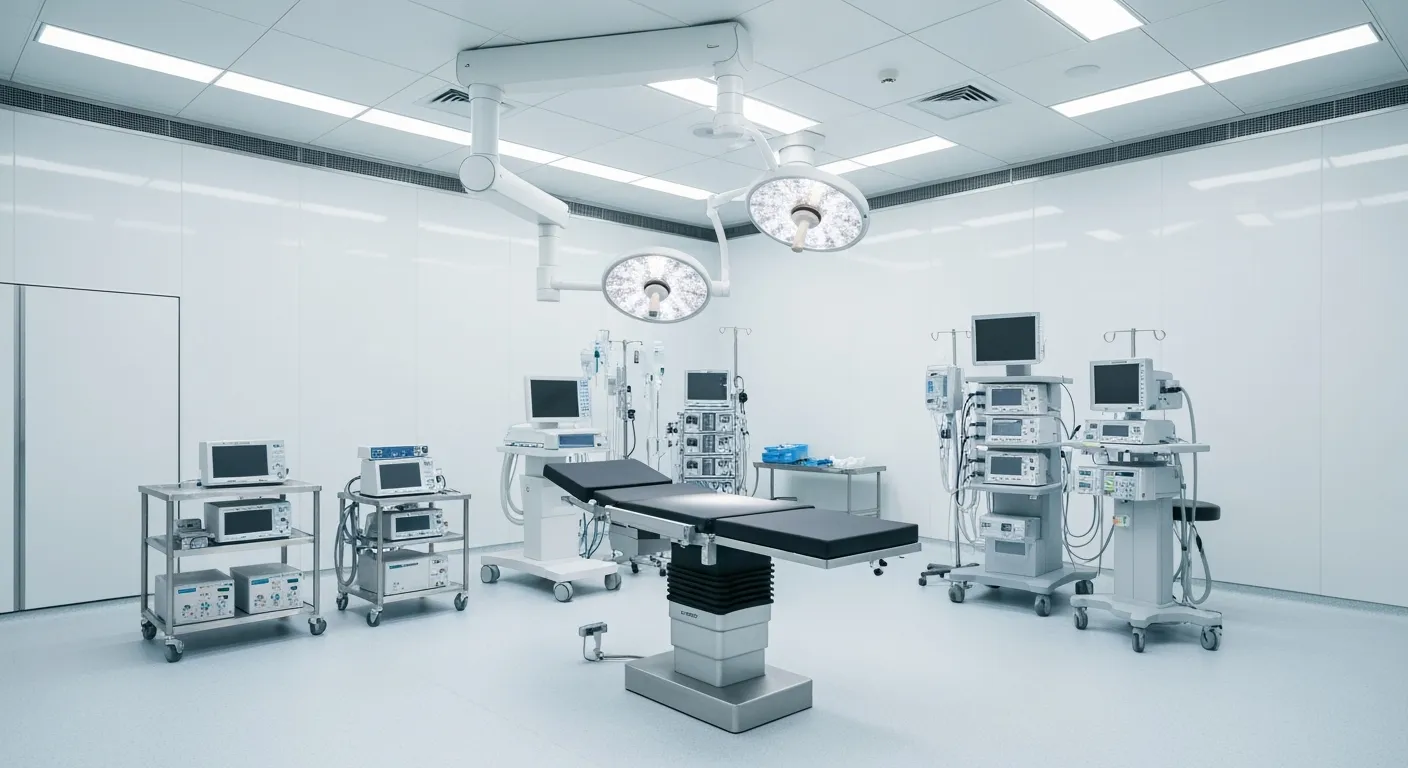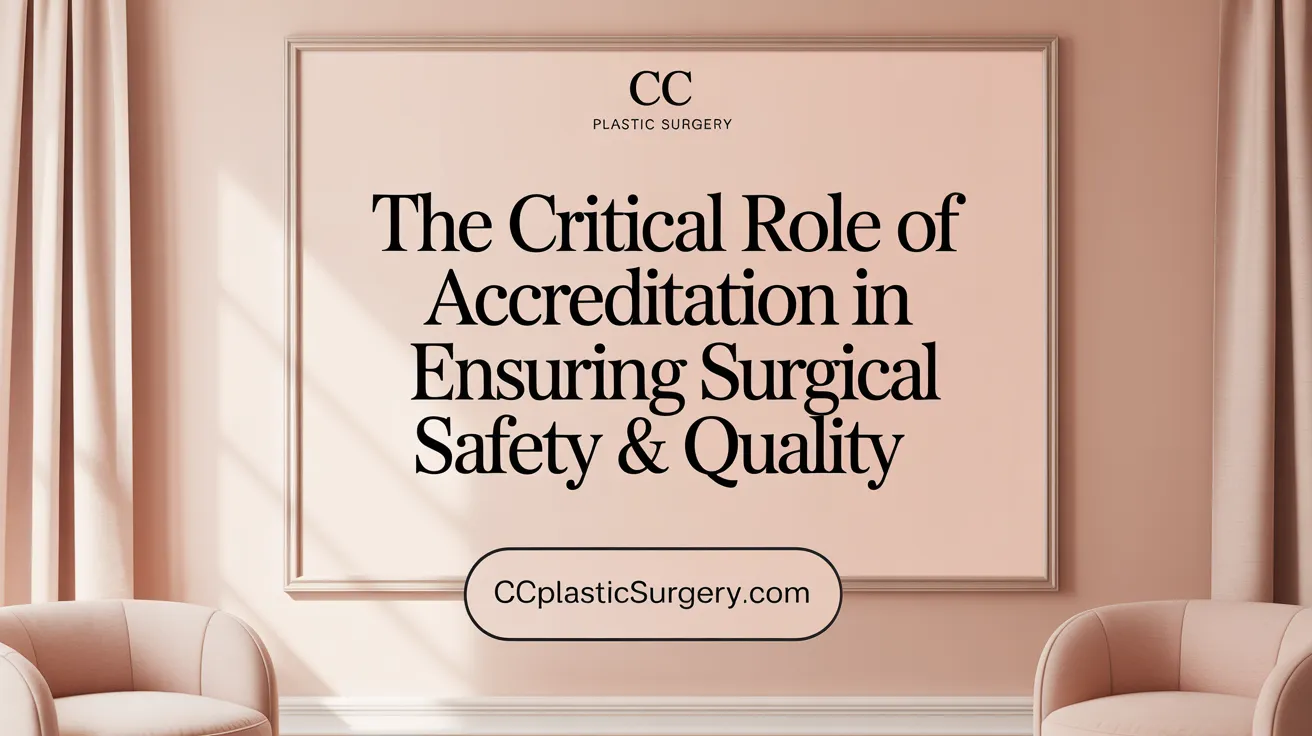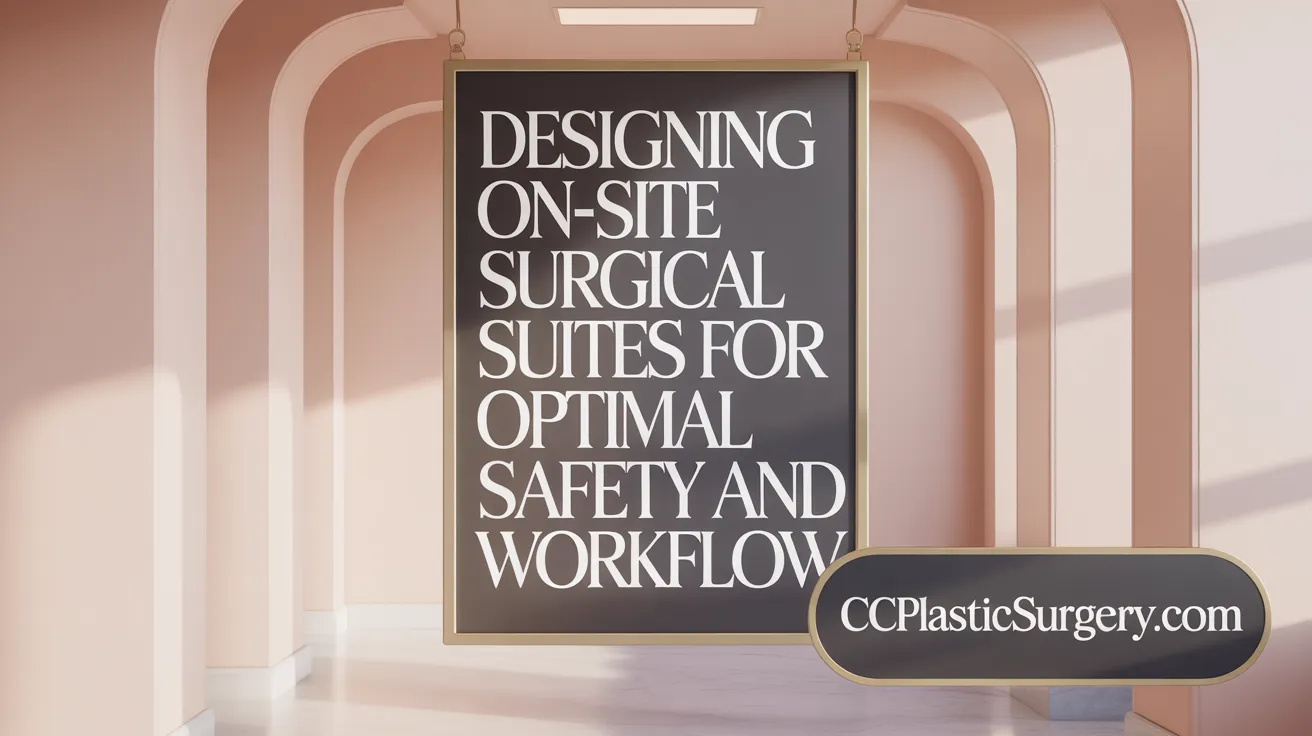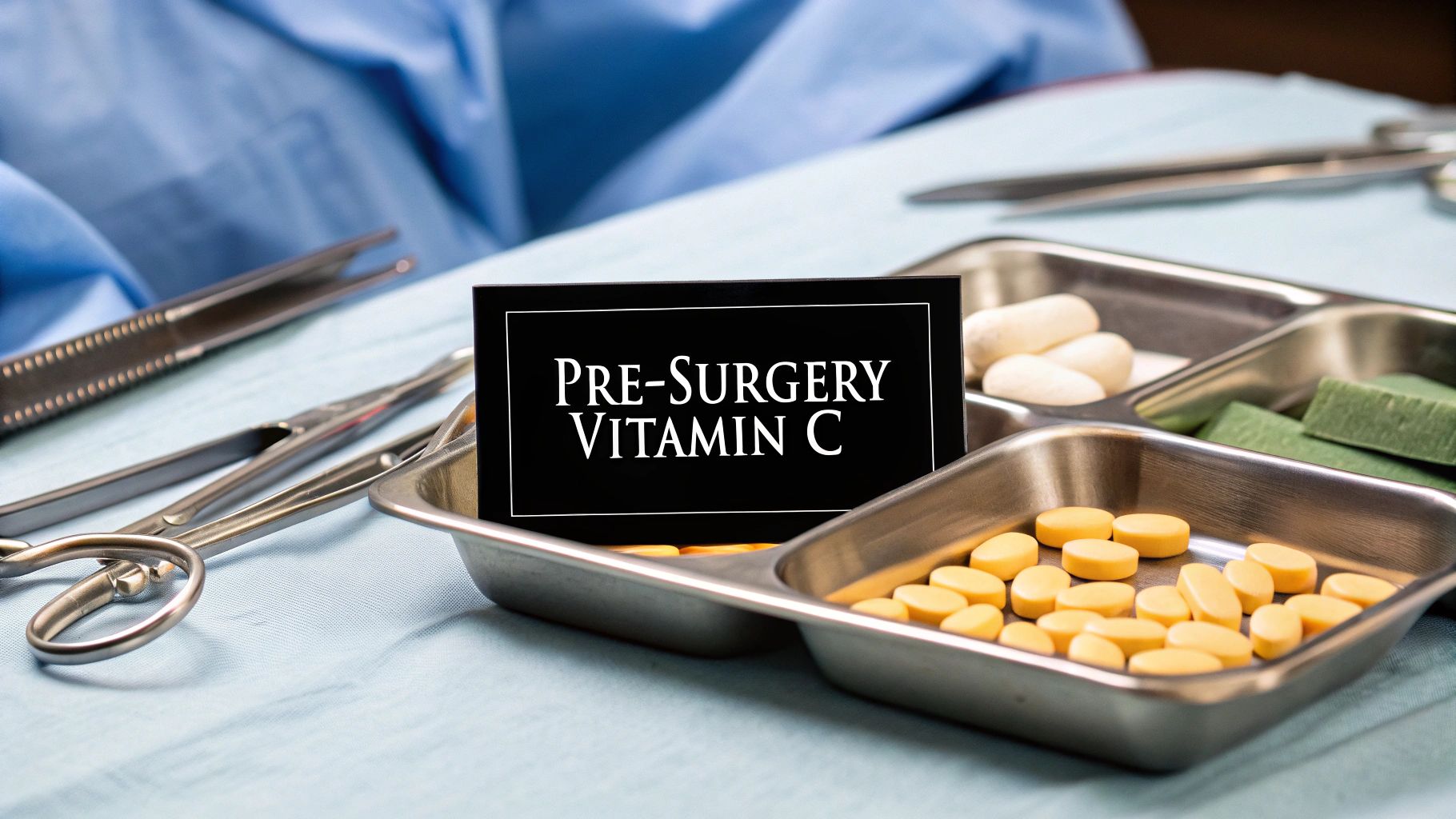
November 23, 2025
What Is Morpheus8 Treatment and How Does It Work
What is Morpheus8 treatment? Discover how this advanced RF microneedling solution revitalizes skin, its benefits, costs, and what to expect from the procedure.
Oct 9, 2025

Ensuring patient safety during surgery is paramount, and the foundation of this is an accredited on-site surgical suite. Accreditation validates that a facility meets rigorous safety, quality, and operational standards, providing patients and surgeons with the confidence needed for successful outcomes. This article explores how on-site accredited surgical suites embody best practices in design, protocols, technology, and continuous improvement to create an optimal environment for surgical safety and efficacy.

Accreditation plays a fundamental role in maintaining high standards of safety and quality in surgical environments. It serves as an external validation that a healthcare facility adheres to strict guidelines established by recognized organizations such as AAAASF accreditation, AAAHC accreditation, and The Joint Commission. These standards encompass various aspects of surgical care, including staff qualifications, sanitation, equipment safety, and emergency preparedness. Regular inspections and record-keeping ensure continuous compliance, which is vital for patient safety.
Facilities that are accredited are required to meet rigorous benchmarks that verify they operate under the best practices for infection control, personnel credentials, and operational protocols. This external validation not only promotes consistency across different care settings but also enhances trust among patients. When a surgical facility is accredited, patients can be more confident that their procedures are performed in a safe, well-equipped, and properly managed environment.
Research indicates that procedures conducted in accredited facilities experience lower complication rates and mortality, which underscores the tangible impact of accreditation on health outcomes. Additionally, accreditation encourages ongoing staff education, quality improvement initiatives, and investments in cutting-edge safety technologies. Overall, accreditation is essential for ensuring that surgical practices meet high safety standards, ultimately safeguarding patient health and fostering confidence in surgical care.

Efficient and safe on-site surgical suites incorporate several essential design features aligned with national standards and best practices. Proper ventilation is paramount; environments should utilize high-efficiency air filtration systems, such as MERV 13 filters or higher, and maintain unidirectional laminar airflow to reduce airborne contamination. Achieving adequate air change rates helps control infection risks and ensures a sterile environment.
Surfaces and materials used within the surgical suite must be durable, non-porous, and easy to clean—favoring glass, stainless steel, and specialized high-grade plastics. These materials facilitate sterilization and reduce microbial loads (infection prevention protocols). The layout of the workspace should promote a streamlined workflow, with organized zones for patient preparation, surgical procedure, and recovery, minimizing movement and clutter (clinical workflows in surgical suite planning).
Innovative lighting solutions, including adjustable LED lights and digital displays, improve visibility and allow precise adjustments during procedures (advanced surgical lighting). Ergonomic room design addresses staff comfort and safety, for example by placing equipment within easy reach and ensuring unobstructed access to emergency tools (workplace safety in surgical environments).
Adherence to safety protocols is crucial. Smoke evacuation systems and ultraviolet disinfection devices contribute to infection prevention (STERIS Smoke Evacuation System). Proper positioning equipment and padding prevent pressure injuries, especially in longer procedures (pressure injury prevention during surgery).
Standards from organizations such as the American Society of Heating, Refrigerating and Air-Conditioning Engineers (ASHRAE), the Association of periOperative Registered Nurses (AORN), and The Joint Commission provide comprehensive guidelines for suite construction and maintenance.
Effective interdisciplinary planning, involving surgeons, nurses, anesthesiologists, engineers, and infection control specialists, ensures the suite design comprehensively addresses safety, infection control, and operational efficiency (safety in surgical environments). This collaborative approach creates a flexible, scalable surgical environment capable of maintaining high safety standards and adapting to technological advancements.

Ensuring safety during surgeries in accredited facilities requires a structured, evidence-based approach that prioritizes patient well-being and team coordination.
A cornerstone of surgical safety is the consistent use of protocols like the WHO Surgical Safety Checklist and the Universal Protocol. These tools facilitate Verification of patient identity, surgical site, and procedure, typically through preoperative verification, site marking, and a final timeout immediately before incision. These checks greatly reduce errors such as wrong-site or wrong-patient surgeries.
Effective communication among surgical team members is vital. Team introductions, clear role assignments, and involving patients in the verification process foster a culture of transparency and vigilance. Involving patients in marking the surgical site and ensuring they've provided informed consent adds an extra layer of safety.
Prevention of infections and errors involves rigorous sterilization procedures, proper patient positioning, and meticulous instrument and sponge counts throughout the operation. Technologies like radiographic verification can be employed when counts are inconsistent.
Staff training, simulation exercises, and continuous education are critical for maintaining high standards. Regular drills and reviews of safety protocols keep the team prepared for emergencies and reduce the likelihood of avoidable mistakes.
A pervasive safety culture is achieved through open communication, supportive leadership, and ongoing quality improvement initiatives. Accrediting bodies mandate these practices, emphasizing regular audits, staff competency assessments, and adherence to safety standards.
By integrating these practices, accredited facilities foster an environment where patient safety is prioritized, risks are minimized, and surgical outcomes are optimized.

Recent Technological Progress in Surgery has transformed the landscape of surgical safety and quality. Innovations like Robotic-Assisted Surgery Innovations and AI in Surgical Precision empower surgeons to perform highly precise procedures, reducing tissue damage, intraoperative blood loss, and recovery times. These tools enable Real-Time Surgical Decision Support, optimizing surgical outcomes.
High-resolution imaging modalities, including MRI and CT scans, assist in meticulous preoperative planning and intraoperative navigation, thus decreasing errors and increasing accuracy. The integration of advanced digital tools, such as electronic safety checklists and computerized decision support systems, ensures that protocols are consistently followed, errors are minimized, and practices are standardized.
Simulation Training for Surgical Teams and Human Factors in Operative Safety, like the OR Black Box, are crucial for ongoing performance improvement. They allow teams to rehearse complex procedures, analyze errors, and implement corrective strategies. Data-driven initiatives, such as quality registries and analytics, identify risk factors, track outcomes, and inform continuous safety improvements.
By combining cutting-edge technology with structured safety protocols and team training, hospitals can foster a Culture of Safety in Surgery. These strategies remove variability, reduce preventable adverse events, and ultimately enhance patient outcomes.
Healthcare professionals seeking to deepen their understanding can explore comprehensive studies and case reports by searching the phrase learning more about technological innovations in surgical safety.

Having on-site surgical suites offers numerous advantages for both patients and providers. These facilities enhance patient convenience by allowing faster scheduling and immediate access to surgical care, which can minimize referral delays and reduce overall wait times. They are often more cost-effective, with savings ranging from 45-60% compared to hospital-based procedures, without compromising safety or quality, thanks to strict accreditation standards and low complication rates. The dedicated environment of onsite suites supports shorter, efficient surgeries and quicker recovery times, leading to fewer postoperative complications and hospital readmissions. Personalized care is more easily delivered, with options for various anesthesia levels and tailored patient comfort measures. Their versatility enables a broad spectrum of procedures—from routine outpatient surgeries to more complex interventions—ensuring high-quality care within a cost-effective setting, ultimately enhancing patient satisfaction and health outcomes.
The accreditation process for surgical suites involves a thorough on-site evaluation typically occurring every three years. Trained healthcare professionals assess the facility’s design, safety protocols, staffing, equipment, and clinical management. Accreditation bodies, such as The Joint Commission and AAAHC, set standards that emphasize patient safety, infection control, emergency preparedness, and staff qualifications. Facilities must demonstrate compliance with stringent policies, including prompt adverse event reporting, maintenance of proper licenses or certifications, and effective safety procedures like emergency plans and staffing protocols. Certification also requires continuous quality improvement practices, including regular staff training, policy reviews, and data tracking. Security measures, environmental controls, and sterilization processes are scrutinized to ensure conformity with federal, state, and local regulations. Support services such as policy assistance, staff education, and ongoing performance monitoring help practices to meet these requirements, ensuring a high standard of safety and quality in the surgical environment.
International efforts, primarily led by the World Health Organization (WHO), play a pivotal role in raising surgical safety standards worldwide. The WHO’s 'Safe Surgery Saves Lives' campaign introduced the Surgical Safety Checklist, a 19-item instrument proven to significantly reduce deaths and complications by promoting essential safety checks and team communication at critical surgical moments. Other WHO initiatives include the Patient Safety Pulse Oximetry Project, aimed at improving oxygen monitoring in resource-limited settings, and the SAFROS project, which develops safety protocols for robotic surgeries. These programs advocate for standardized safety practices, multidisciplinary teamwork, risk management, and infection control across diverse healthcare contexts. They foster a global culture of safety, encouraging implementation of evidence-based protocols, continuous staff training, and international collaboration to reduce surgical adverse events and enhance patient outcomes worldwide.
Continuous enhancement of surgical safety relies on structured quality improvement tools such as Plan-Do-Study-Act (PDSA) cycles and Six Sigma methodologies. Implementing standardized protocols like the WHO Surgical Safety Checklist, adapted to local workflows and staff training, has improved compliance and reduced errors. Regular audits and incident reporting enable ongoing performance review, identification of improvement opportunities, and targeted interventions. Team-based strategies—such as effective communication, leadership, and simulation training—are vital for embedding safety practices into daily routines. The use of advanced technology, environmental controls, and patient engagement further bolster safety initiatives. Data-driven approaches, including analyzing complication rates and safety culture surveys, inform policy refinement, creating an environment of continuous learning and adaptation to evolving surgical complexities and innovations.
On-site accredited surgical suites represent the pinnacle of patient safety and surgical quality. Through adherence to rigorous accreditation standards, thoughtfully designed facilities, comprehensive safety protocols, and integration of cutting-edge technology, these environments ensure that every surgical procedure is conducted with the highest level of care. Continuous quality improvement and global collaboration further strengthen the safety culture, ultimately benefiting patients and healthcare professionals alike. Choosing an accredited on-site surgical suite is a powerful choice for optimizing surgical outcomes, promoting trust, and advancing healthcare excellence.

November 23, 2025
What is Morpheus8 treatment? Discover how this advanced RF microneedling solution revitalizes skin, its benefits, costs, and what to expect from the procedure.

November 22, 2025
Considering vitamin C before surgery? This guide covers the science-backed benefits for healing, potential risks, and crucial advice from surgeons.

November 21, 2025
Does Latisse work for eyebrows? Get the science-backed answer. We explore results, proper use, side effects, and what to expect from this popular treatment.